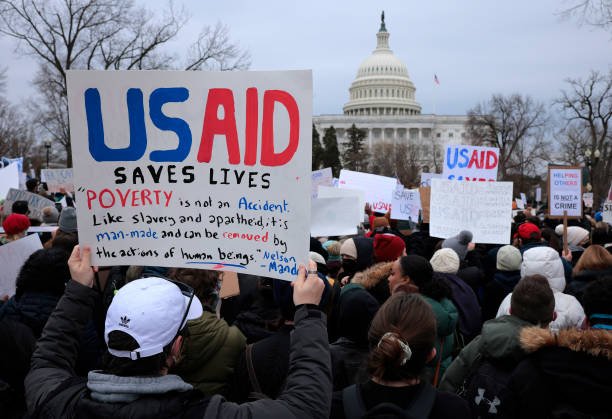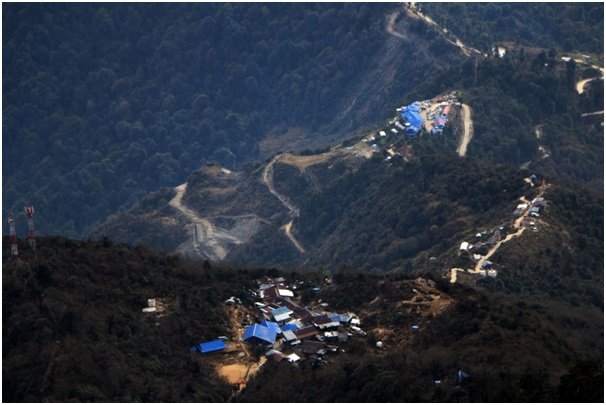Fighting inequality: Time to invest in Resilient Recovery

In the wake of unprecedented natural disasters, Nepal finds itself at a critical juncture, demanding a comprehensive approach to recovery. The harrowing accounts of those like Tek Bahadur Sunar, chairperson of the Kutiyakabar Community Disaster Management Committee, serve as stark reminders of the profound challenges faced by communities in the aftermath of calamities. He took a sigh and said, “It took me a year to reconstruct my home and pay off the loan that I took to reconstruct my home after the flood in 2021. I am one of the most resourceful people in the community. Many others lost their property, grain, and houses. It will take at least 2-3 years to rebuild and recover from the loss. Everyone is on loan. God knows how they will pay back.”
The statistics paint a concerning picture. The ADB report shows more than 3.4 million people were displaced by disaster between 2012-2021, and climate extremities are increasing the risks. And in any year 96000 could be displaced due to earthquakes and riverine floods. A study showed more than 37% of families in Rajapur, Bardiya, still grapple with the aftermath of the devastating rainfall in October 2021. The economic toll is immense, with losses surpassing 7 billion Nepalese rupees due to the 2023 flood in Koshi province. The Melamchi 2021 flood, a catastrophe, wreaked havoc on a water supply system that took two decades to build and millions of dollars to invest.
These disasters have thrust families into a relentless cycle of impact and recovery. Startlingly, it is often the most resourceful who bear the brunt of such tragedies. Yet, it is those in poverty and marginalized communities who suffer the most. Inequity exacerbates the disproportionate impact on those least equipped to rebound. To break this cycle, a transformative approach to recovery is imperative, one that not only prevents further impoverishment but also bolsters the resilience of our communities.
While immediate relief is extended to those affected, the onus of recovery largely falls on the shoulders of the victims themselves. Regrettably, government and Civil Society Organizations (CSOs) provide limited, if any, support for reconstruction. The 2015 earthquake remains a notable exception, as some affected areas continue to receive assistance for reconstruction. However, it is disconcerting to note that funds from the National Disaster Risk Reduction and Management Authority (NDRRMA) are provided by borrowing loans from different institutions.
The National Voluntary Report on Sendai Framework clearly mentioned that 80% of the hazards are of hydrometeorological origin. Climate extremities are increasing uncertainty, frequency, and impact of disaster. The economic toll of disasters on Nepal is staggering. The GDP plummeted from 6% in 2014 to a mere 2% during the 2015 earthquake. The COVID-19 pandemic dealt another blow, leading to a negative growth rate of -2.12% in FY 2019/20. The cumulative loss and damage from 2015 to 2022 exceeded 184 million rupees.
Given the limited domestic resources, the government must explore all avenues to support its citizens. The Asian Development Bank's report for 2022 underscores the crucial role of Official Development Assistance (ODA) funds in disaster recovery. Between 2011 to 2020, the ODA assistance for DRM increased by 160% and 99.9% of the loan for DRM was received after the 2015 earthquake. 24.8% of the total ODA for DRM was tagged for recovery and rehabilitation. However, the increasing reliance on loans over grants is a cause for concern.
At present, loans are the more accessible financial tools for disaster risk reduction, recovery, and rehabilitation. Yet, with ongoing financial crises both locally and globally, Nepal cannot afford to leave its citizens vulnerable to recurring disasters. As custodians of human rights, it is incumbent upon the government to ensure the well-being of its people in the face of climate-induced calamities.
The fourth pillar of the Sendai Framework for Disaster Risk Reduction, "Build Back Better," must cease to be a theoretical aspiration and become a tangible reality for the communities most impacted by recurrent disasters. A dedicated recovery framework is necessary, extending beyond sudden onset events to address floods and other perils.
This moment presents an unparalleled opportunity for Nepal to champion resilient recovery, addressing the gaping chasm of inequality alongside humanitarian aid. In a nation grappling with extreme climatic events, such initiatives are essential for aiding people in rebuilding their lives and futures.
Relying solely on loans to support recovery is untenable, placing citizens at risk of a debt crisis. Nepal must vigorously advocate for accessible climate finance in the form of grants, not loans. Investment in disaster risk reduction and climate change adaptation remains paramount, as does bolstering the resilience of our people.
A systems-based approach for resilient recovery is equally vital. Establishing a robust system that prioritizes climate-smart and resilient livelihood strategies, emphasizes inclusivity, plans finances, and builds technical capacity will be instrumental in navigating the path to recovery.
The most vulnerable members of communities across Nepal are looking to the government for support in their journey towards recovery. It is only through enabling policies, comprehensive guidelines, and substantial investments in resilient recovery that we can protect them from future disasters and pave the way for a brighter, more secure future.







Leave Comment